Every student achievement—from academic excellence and athletic victories to creative breakthroughs and acts of kindness—deserves meaningful recognition that honors effort, inspires peers, and builds lasting pride. Yet many schools struggle with recognition that feels outdated, inconsistent, or invisible, relying on faded bulletin boards, overflowing trophy cases, or brief announcements that students barely notice. Effective recognition requires more than cursory acknowledgment—it demands thoughtful systems that celebrate diverse accomplishments, engage the school community, and create lasting inspiration for current and future students.
The best recognition programs transform how schools celebrate achievement by making accomplishments visible, accessible, and inspiring through multiple channels and formats. From traditional ceremonies and physical displays to innovative digital platforms and social media celebration, modern recognition strategies leverage both time-tested approaches and cutting-edge technology to ensure every achievement receives appropriate visibility and impact.
This comprehensive guide explores 30+ proven strategies for highlighting student accomplishments in 2025, from foundational recognition principles to innovative modern approaches leveraging technology. Whether establishing recognition programs from scratch or revitalizing existing systems that have grown stale, these evidence-based strategies help schools build recognition cultures that genuinely motivate students while celebrating the full spectrum of human excellence.
Understanding Effective Recognition: The Psychology Behind Impact
Before implementing specific strategies, understanding what makes recognition truly effective ensures your efforts create genuine motivation rather than empty gestures that students dismiss or resent.
The Core Principles of Meaningful Recognition
Effective recognition adheres to fundamental psychological principles that drive intrinsic motivation and authentic engagement:
Specificity Over Generality
Generic praise like “good job” or “nice work” carries minimal motivational power compared to specific recognition that identifies exactly what students accomplished and why it matters. Effective recognition describes the specific achievement, explains its significance, acknowledges the effort or skills demonstrated, and connects the accomplishment to larger goals or values.
Timeliness and Proximity
Recognition delivered immediately after achievements occurs carries exponentially greater impact than delayed acknowledgment weeks or months later. The closer recognition comes to the achievement moment, the stronger the connection between effort and reward, the more authentic the acknowledgment feels, and the greater the motivational effect on future behavior.
Public Versus Private Recognition
Different students respond differently to public versus private acknowledgment based on personality, cultural background, and achievement type. Effective recognition systems offer both public celebration for those who thrive on peer acknowledgment and private recognition honoring those who prefer quieter acknowledgment. The key is providing options rather than forcing all recognition into identical formats.

Authenticity and Sincerity
Students possess highly accurate detection systems for authentic versus perfunctory recognition. Genuine acknowledgment that demonstrates real awareness of their achievement and authentic appreciation for their effort resonates powerfully, while formulaic or insincere recognition may actually diminish motivation by communicating that adults don’t truly value what students accomplish.
Balance Between Achievement and Effort
While recognizing outcomes matters, acknowledging the process, effort, and growth that led to achievement proves equally important. Recognition that celebrates both results and the journey to those results supports growth mindset development, honors students at different starting points, and validates that effort itself deserves acknowledgment regardless of absolute achievement levels.
Types of Recognition That Drive Different Outcomes
Strategic recognition serves multiple purposes depending on design and implementation:
Motivational Recognition encourages continued effort and pursuit of excellence by demonstrating that achievements receive attention and celebration. This recognition typically emphasizes the connection between effort and outcomes while highlighting pathways others can follow.
Informational Recognition communicates institutional values and priorities by showing which accomplishments receive celebration. Students learn what schools genuinely value not through mission statements but through which achievements receive prominent recognition and resources.
Social Recognition builds community bonds and collective pride through shared celebration of peer accomplishments. When students celebrate classmates’ success, it creates cultures of mutual support rather than destructive competition.
Historical Recognition preserves institutional memory and tradition by documenting achievements across generations. This recognition connects current students to longer institutional narratives while demonstrating that today’s efforts join established traditions of excellence.
Traditional Recognition Strategies That Stand the Test of Time
Certain recognition approaches have proven effective across decades because they address fundamental human needs for acknowledgment, belonging, and celebration.
Recognition Ceremonies and Award Presentations
Formal ceremonies create meaningful moments that honor achievements through structured celebration involving families, peers, and communities.
Award Ceremony Best Practices
Effective ceremonies balance formality and engagement while maintaining focus on honorees rather than institutional messaging. Well-designed ceremonies include personal remarks about each recipient rather than simply reading names, involve families through scheduling and invitation approaches that encourage attendance, feature peer audiences ensuring classmate recognition rather than only adult acknowledgment, incorporate multimedia elements like photos and videos bringing achievements to life, and maintain appropriate length respecting audience attention spans.
Diverse Ceremony Formats
Different achievements warrant different recognition formats. Consider comprehensive year-end ceremonies celebrating major annual awards, quarterly recognition assemblies honoring term-based achievements, subject-specific departmental awards nights focusing on particular achievement domains, athletic banquets celebrating sports accomplishments with team contexts, and arts showcases combining recognition with performance or exhibition elements.
Schools implementing student awards recognition programs find that thoughtfully designed ceremonies create memorable experiences that amplify the impact of achievement acknowledgment.
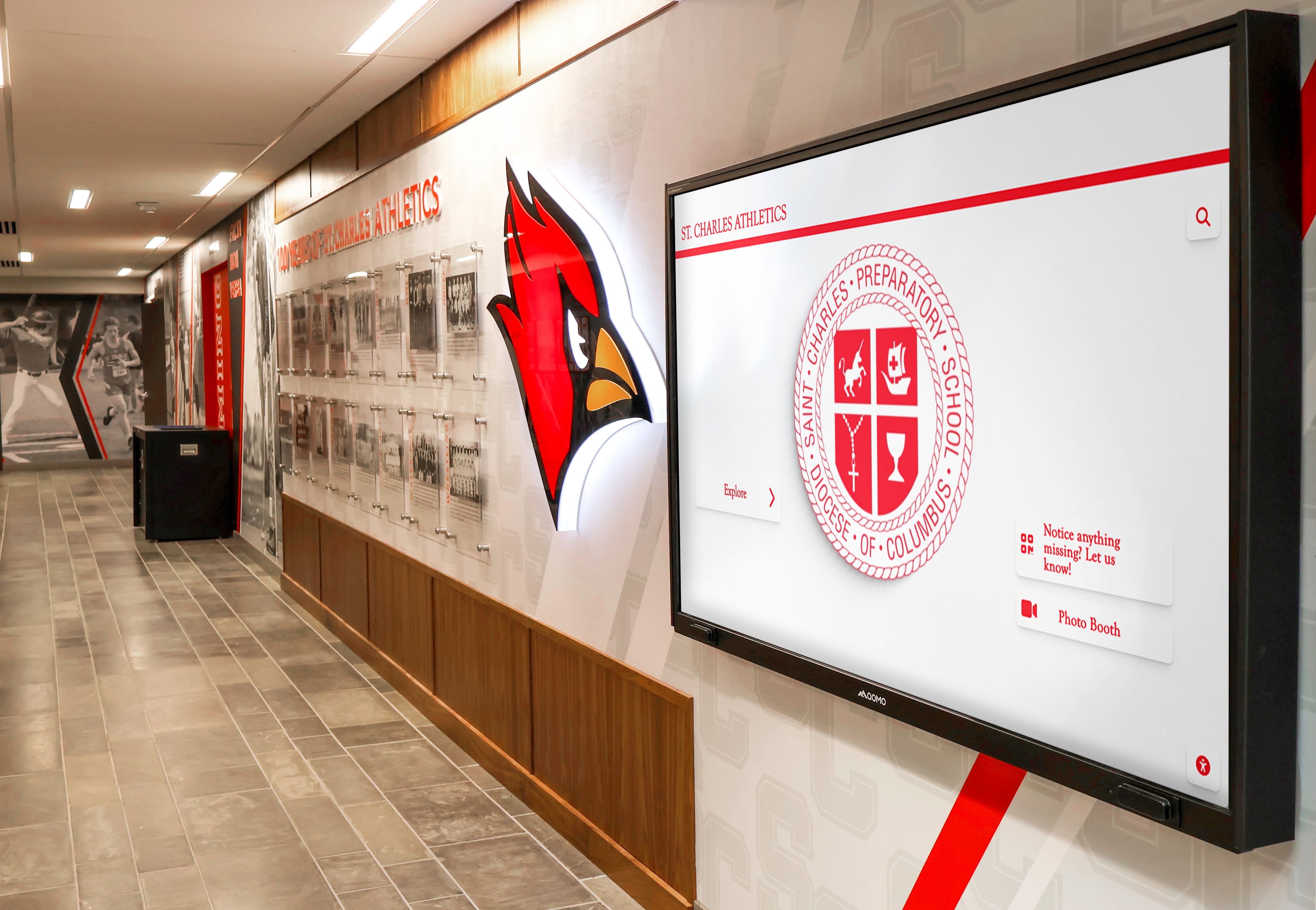
Including Student Voice
Student-led elements transform ceremonies from adult-directed events into authentic community celebrations. Incorporate student speakers sharing achievement stories, student presenters announcing awards or introducing recipients, student performers providing entertainment elements, student committees helping plan and organize ceremonies, and student feedback shaping future ceremony improvements.
Recognition Displays and Physical Spaces
Visible displays throughout school facilities ensure achievements receive ongoing attention beyond brief ceremony moments.
Trophy Cases and Award Displays
Traditional trophy cases remain valuable when properly maintained and thoughtfully designed. Effective trophy displays include clear organization by achievement type or year, prominent placement in high-traffic areas ensuring visibility, quality lighting highlighting displayed items, regular rotation preventing stagnation, and informative labeling providing context for each achievement.
Recognition Walls and Plaques
Dedicated wall space honoring achievements creates permanent institutional recognition. Recognition walls effectively celebrate diverse accomplishments when they include multiple achievement categories ensuring comprehensive representation, professional design and installation reflecting the importance of recognition, regular updates adding recent achievements, accessible placement allowing easy viewing, and weatherproof materials for outdoor installations.
Honor Roll Boards
Academic honor roll displays remain staples of school recognition programs. Modern approaches to honor roll recognition include quarterly updates maintaining relevance, multiple honor tiers allowing recognition across achievement levels, clear criteria transparency about qualification requirements, celebratory design elements beyond simple name lists, and permanent archives documenting honor roll students across years.
While traditional displays serve important purposes, many schools discover that digital recognition displays solve fundamental limitations of physical recognition including space constraints, update difficulty, and limited engagement potential.
Modern Recognition Approaches Leveraging Technology
Digital technology enables recognition strategies that transcend the limitations of traditional approaches while creating new possibilities for celebrating achievement.
Interactive Digital Recognition Displays
Touchscreen recognition systems transform passive wall displays into engaging exploration experiences that students actively use and enjoy.
Core Interactive Display Capabilities
Modern interactive displays enable intuitive touchscreen navigation allowing self-directed exploration, powerful search functionality finding specific students or achievements instantly, rich multimedia integration including photos, videos, and comprehensive profiles, unlimited capacity recognizing achievements without physical space constraints, easy content updates adding new recognition in real-time, and comprehensive analytics measuring engagement and usage patterns.
Interactive boards for student achievement create recognition experiences that resonate with digitally-native students while providing unprecedented flexibility for comprehensive celebration.

Strategic Display Placement
Location determines visibility and usage. Position interactive displays in main entrance lobbies where all students pass daily, cafeteria common areas with natural dwell time, athletic facility entrances accessed by teams regularly, library media centers supporting academic achievement themes, and performing arts centers celebrating creative accomplishments in relevant contexts.
Compelling Content Development
Technology enables recognition but content creates impact. Develop comprehensive profiles including professional photography showcasing students, detailed achievement descriptions with context and significance, video interviews capturing student reflections and stories, teacher testimonials explaining achievement importance, achievement timelines showing progression and growth, and related content connections introducing students to peer accomplishments.
Online Recognition Platforms and Websites
Web-based recognition extends acknowledgment beyond those who can physically visit school facilities, reaching families, alumni, and community members worldwide.
Dedicated Recognition Websites
Schools establish online recognition platforms accessible to anyone with internet access. Effective online platforms include searchable databases enabling quick finding of specific individuals, filtered browsing by achievement type, graduation year, or program, mobile-responsive design ensuring smartphone and tablet accessibility, social sharing capabilities allowing achievement celebration across networks, and permanent archives preserving recognition indefinitely.
Comprehensive online hall of fame systems complement physical displays while extending recognition reach to dispersed communities.
Integration with School Websites
Recognition featured prominently on school websites demonstrates institutional commitment to celebrating achievement. Website recognition integration includes dedicated recognition pages or sections with clear navigation, homepage features rotating highlighted achievements, news sections announcing recent accomplishments, photo galleries showcasing recognition events and ceremonies, and video content bringing achievements to life through multimedia storytelling.
Mobile Applications
Mobile-first recognition meets students where they naturally consume content and information. Mobile recognition apps provide push notifications celebrating new achievements in real-time, personalized feeds showing relevant achievements based on interests, achievement portfolios students curate and share, parent access to their students’ recognition history, and alumni platforms connecting current students with graduates.
Social Media Recognition Strategies
Strategic social media use amplifies recognition while connecting school communities through shared celebration across digital platforms where students and families actively engage.
Platform-Specific Recognition Approaches
Different social platforms serve different recognition purposes through their unique formats and audiences. Instagram excels at visual achievement celebration through photo posts with detailed captions, story highlights preserving recognition beyond 24-hour limits, and reels showcasing achievement moments through short video. Facebook effectively reaches parent and family audiences through detailed achievement posts with photo albums, event promotion for recognition ceremonies, and community group engagement fostering discussion and celebration. Twitter provides timely announcement of achievements as they occur, quick links to extended recognition content, and hashtag campaigns organizing recognition themes.
Social Media Recognition Best Practices
Effective social recognition maintains consistency through regular posting schedules keeping recognition visible, authentic voice that feels genuine rather than corporate, student permission ensuring comfort with public sharing, family tagging enabling parents to easily share recognition, varied content types preventing feed monotony, and engagement encouragement through comments, likes, and shares building community celebration.
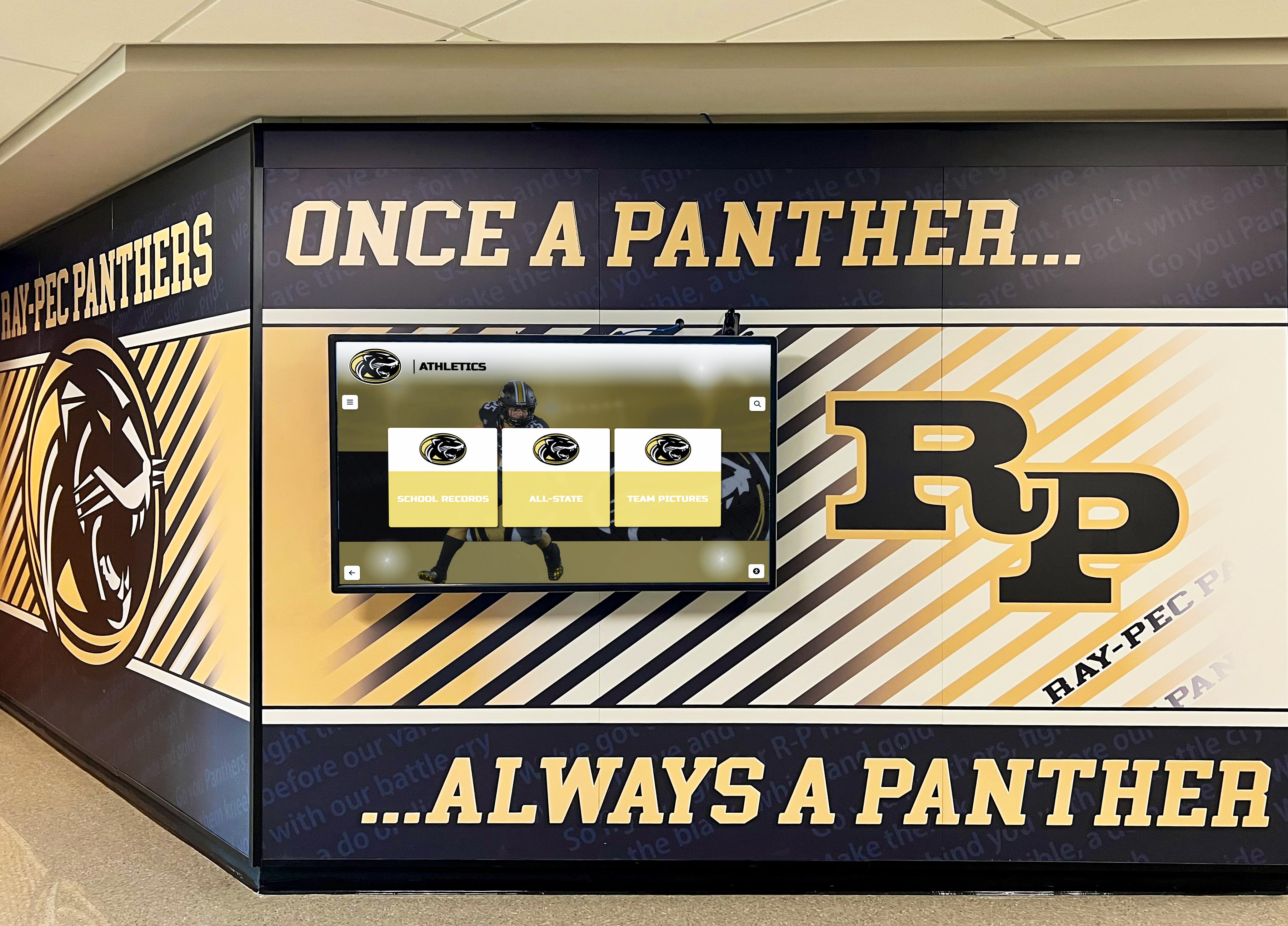
Student-Generated Social Content
Empowering students to contribute recognition content creates authentic peer-to-peer celebration that resonates more deeply than adult-created messaging. Student social media ambassadors can share peer achievements, student photographers capture achievement moments, student writers craft achievement stories, student editors curate recognition content, and student managers coordinate recognition campaigns.
Recognition Program Categories: Celebrating Diverse Achievement
Comprehensive recognition honors the full spectrum of student accomplishment rather than focusing narrowly on limited achievement types.
Academic Achievement Recognition
Intellectual excellence deserves prominent celebration demonstrating institutional commitment to learning and scholarship.
Traditional Academic Honors
Core academic recognition includes honor roll and dean’s list recognition by grading period, subject-specific excellence awards in individual disciplines, academic improvement awards celebrating significant growth, perfect attendance recognition acknowledging consistency and commitment, National Honor Society induction ceremonies, and scholarship recipient celebration as students earn college funding.
Competition and Enrichment Recognition
Celebrate students extending learning beyond classroom requirements through academic competition achievements in Science Olympiad, Math League, or debate tournaments; research symposium presentations and findings; publication in academic journals or magazines; invention competition participation and awards; and enrichment program completion like summer academic programs or specialized courses.
Schools implementing comprehensive academic recognition demonstrate that intellectual achievement receives celebration equal to athletic accomplishment.
Athletic Accomplishment Celebration
Sports achievements provide highly visible recognition opportunities building school pride while honoring dedication and excellence.
Individual Athletic Recognition
Honor individual excellence through varsity letter awards recognizing sustained participation and performance, all-conference and all-state selections celebrating elite achievement, record-breaking performances establishing new benchmarks, milestone accomplishments like 1,000-point scorers, most valuable player and positional awards, and college commitment celebrations honoring student-athletes continuing their careers.
Team Achievement Recognition
Celebrate collective success through championship banners and display, team captains and leadership recognition, most improved team member awards, sportsmanship and character honors, season highlight videos and photo collections, and end-of-season celebration events bringing teams and families together.
Arts and Creative Achievement Recognition
Creative excellence across visual arts, performing arts, and creative writing deserves celebration equal to academic and athletic accomplishment.
Visual Arts Recognition
Honor artistic talent through student art exhibitions with opening receptions, competition award winners at regional or national levels, student artwork acquisition for permanent school collection, photography contest participants and honorees, and design competition recognition in graphic design, fashion, or product design.
Performing Arts Achievement
Celebrate performance excellence through theater production recognition for cast and crew, musical performance soloists and ensemble members, dance recital participants and choreographers, district and state festival qualifiers, and technical theater excellence in lighting, sound, stage design, and production management.
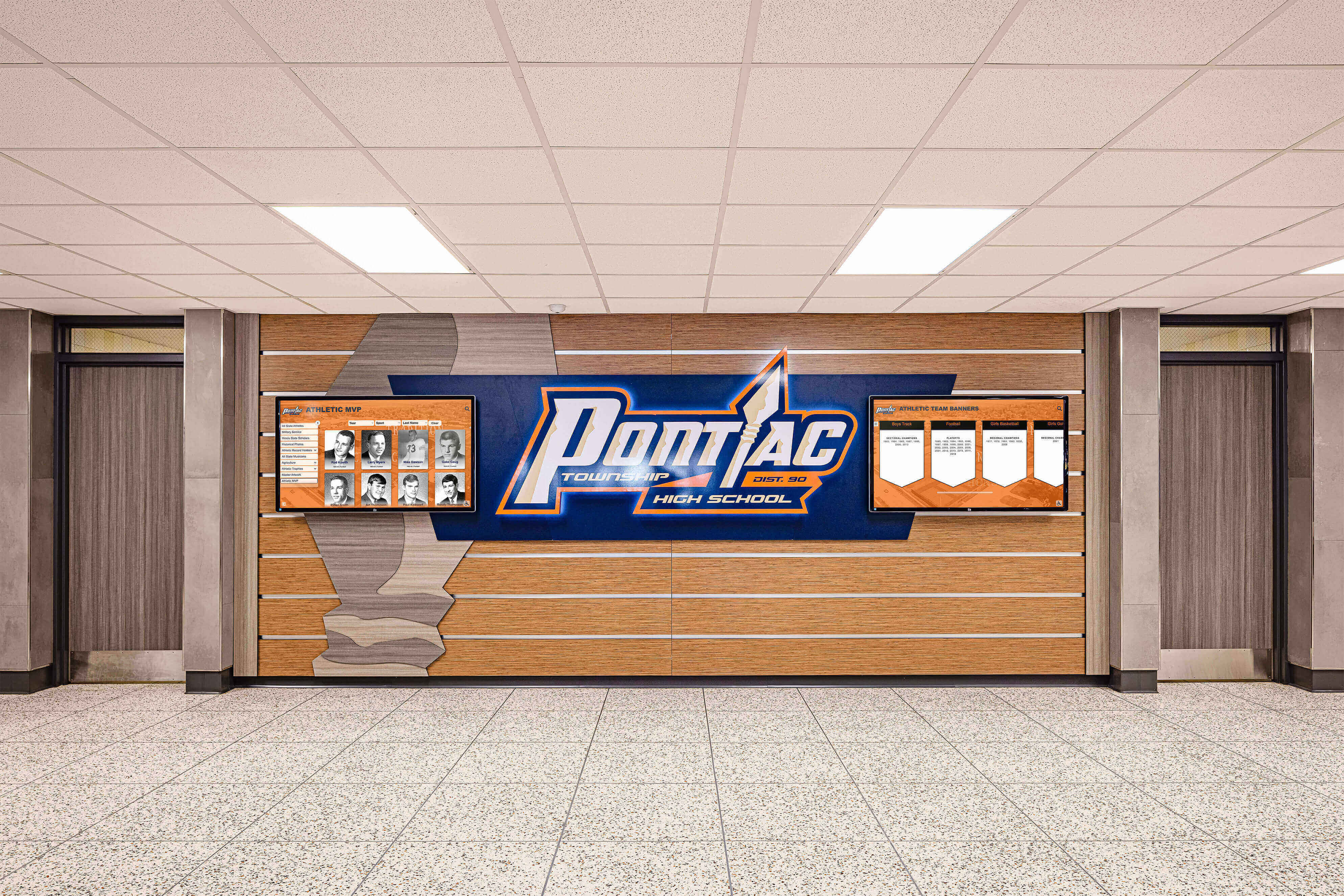
Creative Writing Recognition
Acknowledge literary talent through writing contest winners and publication, literary magazine editors and contributors, journalism excellence in school newspapers, poetry competition honorees, and creative portfolio development recognizing sustained creative production.
Leadership, Service, and Character Recognition
Personal qualities and contributions that strengthen communities deserve prominent acknowledgment alongside measurable achievement.
Leadership Recognition
Honor student leaders through student of the month programs celebrating well-rounded excellence, student government officers and representatives, club presidents and organization leaders, peer mentors and tutors, and student ambassadors representing schools to visitors and community.
Service and Citizenship
Celebrate community contribution through community service hour milestones and documentation, service project leadership recognition, character education award recipients, peer conflict mediators and peacemakers, and environmental stewardship initiatives and sustainability leadership.
Improvement and Growth Recognition
Acknowledge progress and perseverance through most improved student awards across subjects, academic turnaround recognition for dramatic improvement, attendance improvement acknowledgment, behavioral growth celebration, and resilience awards honoring students overcoming significant obstacles.
Creating Inclusive Recognition Systems
Effective recognition ensures all students—regardless of background, ability, or circumstance—experience appropriate acknowledgment for their genuine efforts and accomplishments.
Multiple Recognition Pathways
Diverse students excel in different ways, and comprehensive recognition honors various achievement types rather than privileging narrow definitions of success.
Academic Diversity Recognition
Beyond traditional grades, recognize intellectual engagement through curiosity and question-asking, creative problem-solving approaches, collaborative learning contributions, research and inquiry project depth, and critical thinking demonstration in discussions and work.
Non-Competitive Achievement
Not all accomplishments involve competition, and recognition should celebrate individual growth milestones, skill mastery demonstrations, creative project completion, sustained participation and commitment, and personal goal achievement regardless of comparative rankings.
Behind-the-Scenes Contributions
Many students contribute significantly in less visible roles deserving acknowledgment: stage crew supporting theatrical productions, team managers supporting athletic programs, tutors helping peers succeed academically, library assistants supporting school resources, and technology helpers maintaining systems and supporting digital initiatives.
Equitable Recognition Distribution
Monitoring recognition patterns ensures acknowledgment reaches all student populations rather than concentrating on narrow groups.
Demographic Balance Tracking
Systematically monitor whether recognition reaches students across gender identities, racial and ethnic backgrounds, socioeconomic circumstances, ability levels and special education status, English language learner populations, and grade levels ensuring representation throughout school.
Proactive Outreach
Don’t rely solely on nominations—actively seek deserving students through consultation with diverse staff members seeing students in various contexts, partnership with counselors aware of student circumstances and challenges, connection with community organizations knowing student contributions outside school, student self-nomination opportunities encouraging self-advocacy, and targeted recognition campaigns celebrating specific underrepresented achievement types.
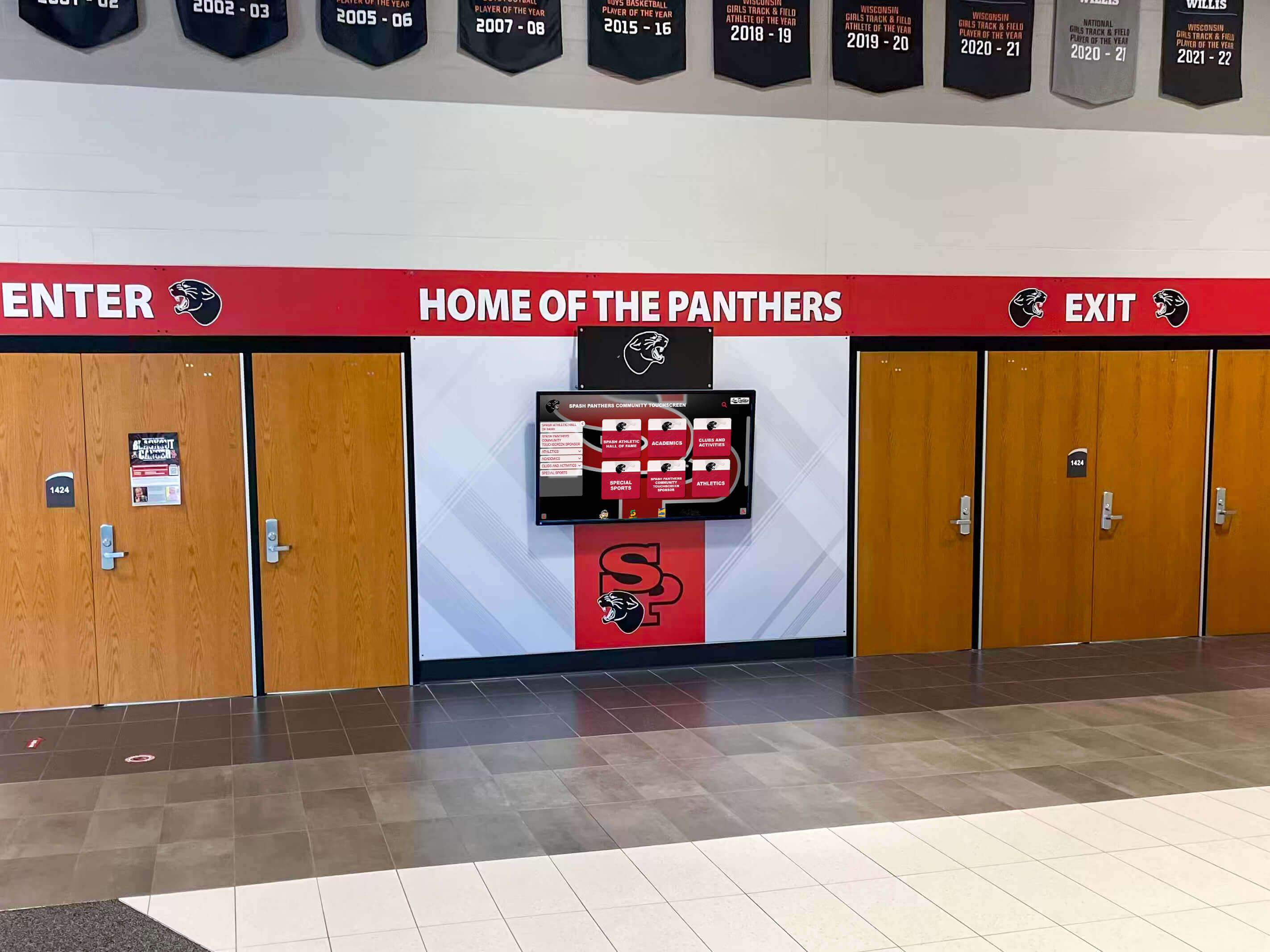
Recognition for All Ability Levels
Achievement takes different forms for students at different starting points, and effective recognition honors progress and effort across ability spectrums.
Individualized Achievement Standards
Recognize students reaching personalized goals appropriate to their abilities through IEP goal attainment celebration, modified achievement acknowledgment, effort and perseverance recognition regardless of absolute outcomes, skill progression demonstration showing growth, and functional life skill mastery supporting independence.
Inclusive Recognition Criteria
Ensure recognition criteria remain achievable for students with diverse abilities through multiple evidence types accommodating different demonstration methods, progress measures rather than only absolute achievement, participation recognition alongside performance acknowledgment, and collaboration categories valuing teamwork and contribution over individual dominance.
Communication and Promotion Strategies
Even excellent recognition programs fail to achieve full impact without strategic communication ensuring visibility, understanding, and engagement.
Multi-Channel Recognition Announcement
Maximize recognition reach through diverse communication channels reaching different stakeholder groups.
Internal Communication Channels
Within schools, announce recognition through morning announcements and video bulletins, digital displays and signage throughout facilities, email newsletters to students, staff, and families, classroom announcements by teachers, and assembly recognition at school-wide gatherings.
External Communication Channels
Extend recognition beyond school walls through school websites featuring achievement highlights, social media posts across multiple platforms, local media press releases and submissions, community newsletters and publications, and parent communication apps providing mobile notifications.
Targeted Communication
Personalize recognition announcement to relevant audiences: direct notification to recognized students and families, announcement to relevant classes, teams, or programs, sharing with feeder schools or receiving schools as students transition, alumni communication connecting current recognition to graduate success, and donor communication when recognition relates to funded programs or scholarships.
Recognition Promotion Campaigns
Strategic campaigns maintain awareness and engagement with recognition programs throughout school years.
Launch Campaigns
New recognition programs require promotional launches including unveiling events with students, families, and community attendance, media coverage highlighting innovative recognition approaches, demonstration activities showing how recognition works, initial featured content showcasing popular students, and contests or challenges encouraging first interactions with new systems.
Ongoing Promotion
Sustain awareness through regular reminders about recognition opportunities and nomination processes, featured achievement spotlights on rotating schedules, social media campaigns with creative hashtags and themes, integration into classroom curriculum through recognition-based lessons or activities, and event-connected recognition during homecoming, reunions, or graduation.
Student Ambassador Programs
Empower students to promote recognition through peer recognition committees identifying deserving classmates, student social media ambassadors sharing achievements, tour guide integration incorporating recognition into campus tours, student newsletter contributors writing recognition stories, and peer nomination campaigns encouraging student-to-student recognition.
Measuring Recognition Program Effectiveness
Systematic assessment ensures recognition programs achieve intended purposes while identifying improvement opportunities.
Quantitative Success Metrics
Data-driven evaluation provides objective measures of recognition reach and impact.
Participation and Reach Metrics
Track total students recognized annually and percentage of student body receiving acknowledgment, recognition distribution across achievement categories, demographic representation ensuring equitable reach, recognition frequency and consistency throughout years, and repeat recognition identifying students earning multiple honors.
Engagement Metrics
For digital recognition systems, measure total views and interactions with recognition content, unique visitors versus returning users, average session duration indicating engagement depth, search patterns revealing student interests, social sharing frequency and reach, and content popularity identifying most engaging achievement types.
Behavioral Correlation
Assess whether recognition associates with desired outcomes through participation trends in recognized programs, academic performance patterns among recognized students, attendance and behavior data correlations, program enrollment changes following recognition campaigns, and alumni engagement levels for formerly recognized students.
Qualitative Impact Assessment
Beyond numbers, qualitative evidence reveals recognition’s true effects on students and communities.
Stakeholder Feedback
Gather perspectives through student surveys about recognition fairness, meaningfulness, and motivational impact; family feedback about appreciation for recognition and communication effectiveness; staff input on program sustainability and improvement opportunities; and recognized student interviews exploring their personal experiences with acknowledgment.
Cultural Indicators
Observe broader school culture effects including student pride and engagement indicators, peer celebration dynamics and supportive climates, family involvement in school activities and events, community perception of school excellence, and prospective student interest during recruitment activities.
Success Stories
Document compelling narratives demonstrating recognition impact through student testimonials about how recognition influenced motivation or choices, teacher observations of recognition effects on student effort and engagement, parent stories about recognition’s meaning for families, alumni reflections connecting recognition to long-term outcomes, and community member impressions of school recognition culture.
Overcoming Common Recognition Challenges
Understanding predictable obstacles helps schools navigate them effectively while maintaining recognition program momentum and quality.
Time and Resource Constraints
Recognition programs require investment of time, personnel, and financial resources that busy schools struggle to allocate.
Efficiency Solutions
Streamline recognition through automated systems capturing qualifying achievements from student information databases, standardized templates simplifying content creation, distributed responsibilities spreading workload across multiple staff, student involvement leveraging young energy and skills, and technology platforms reducing manual administrative burden through cloud-based management interfaces.
Resource Optimization
Maximize impact within constraints through phased implementation starting with highest-priority recognition, digital investments reducing ongoing physical production costs, community partnerships providing funding or support, volunteer engagement of parents and alumni, and repurposed existing resources redirected from less effective recognition approaches.
Maintaining Fairness and Credibility
Recognition programs lose effectiveness when stakeholders perceive favoritism, bias, or inconsistent standards undermining credibility.
Transparency Measures
Build trust through published recognition criteria accessible to all stakeholders, clear nomination and selection processes with documented procedures, diverse selection committees bringing multiple perspectives, documentation of selection rationale available for review, and regular equity analysis identifying and addressing imbalances.
Consistent Application
Ensure fairness through standardized evaluation rubrics or criteria for subjective awards, multiple evaluator input reducing individual bias, blind review processes when appropriate, conflict of interest protocols for selection committee members, and appeals processes allowing concerns to be raised and addressed.
Sustaining Long-Term Engagement
Recognition programs often start strong but fade as initial enthusiasm wanes and competing priorities emerge.
Momentum Maintenance
Sustain engagement through continuous innovation adding new features or recognition categories, student involvement keeping programs connected to current student interests, regular assessment and improvement cycles, celebration of program milestones and successes, and leadership commitment ensuring ongoing priority and resources.
Refresh Strategies
Prevent staleness through content variety across media types and formats, seasonal themes and recognition campaigns, special collections around events like homecoming or graduation, historical anniversary features connecting past and present, and technology updates adding new capabilities over time.
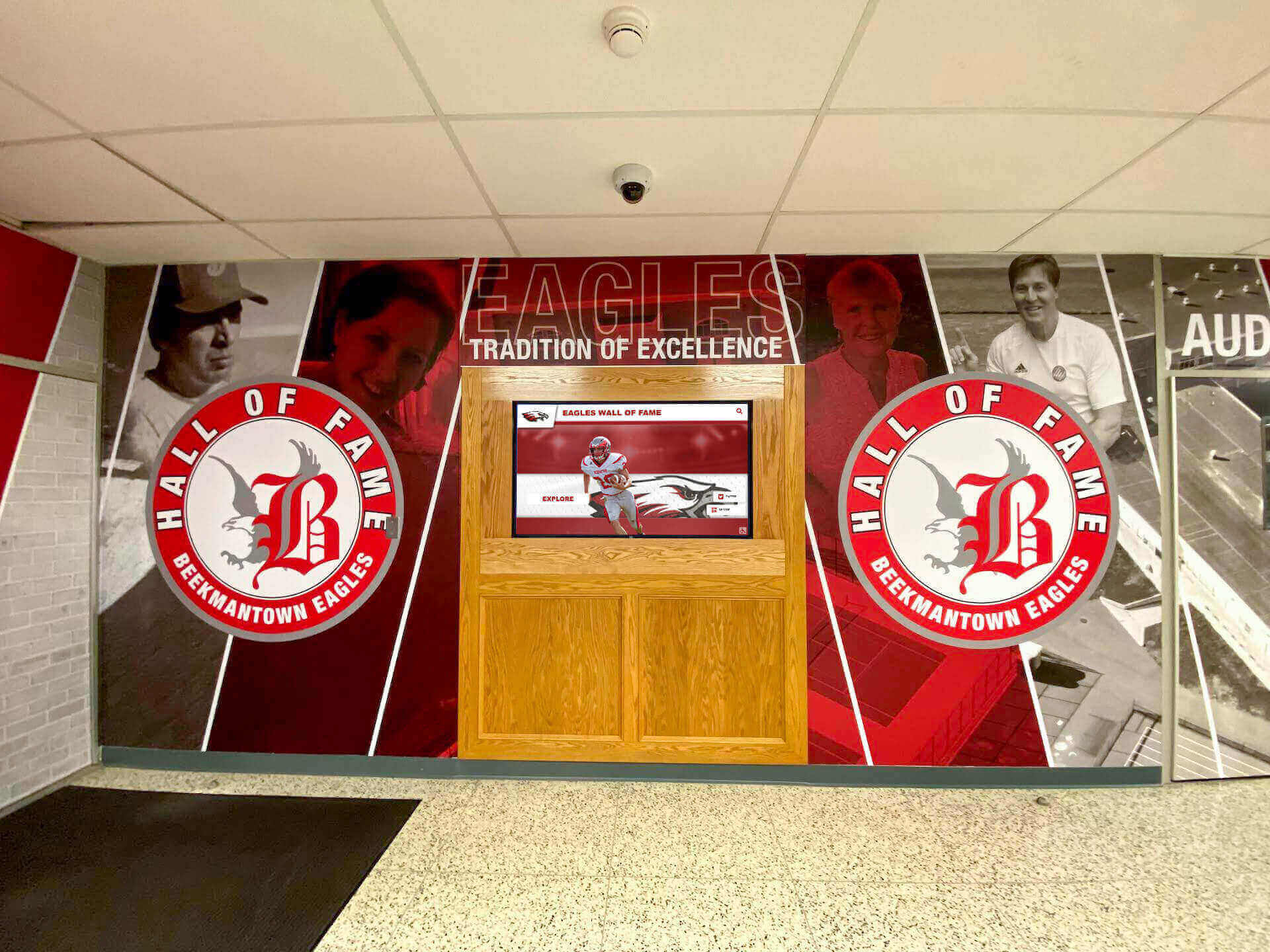
Future Trends in Student Recognition
Understanding emerging trends helps schools make forward-looking recognition investments while anticipating how acknowledgment will evolve.
Artificial Intelligence Integration
AI technologies will personalize and automate aspects of recognition while providing deeper insights into program effectiveness.
Intelligent recognition systems will offer automated achievement detection identifying qualifying accomplishments from school data systems, personalized recommendation engines suggesting relevant recognition opportunities for students, natural language processing enabling conversational search and interaction, predictive analytics identifying at-risk students who would benefit from recognition, and sentiment analysis measuring emotional responses to different recognition approaches.
Enhanced Digital Credentials
Recognition will increasingly connect to portable digital credentials students carry throughout education and careers.
Digital badge systems will provide blockchain-verified achievement documentation, comprehensive skill portfolios demonstrating competency mastery, shareable social credentials for professional networks and applications, micro-credential accumulation building toward macro recognition, and employer-valued certifications connecting school recognition to career opportunities.
Immersive Recognition Experiences
Extended reality technologies will create new recognition dimensions beyond traditional displays and ceremonies.
Augmented reality recognition will overlay digital information on physical spaces when viewed through devices, virtual ceremony spaces enabling remote family participation in recognition events, 3D achievement showcases allowing exploration of student work in immersive environments, gamified exploration using AR scavenger hunts to discover peer achievements, and holographic displays creating futuristic recognition experiences.
Personalized Recognition Pathways
Technology will enable customized recognition journeys tailored to individual student goals, interests, and circumstances.
Personalized systems will track individualized achievement goals aligned with student aspirations, adaptive recognition criteria adjusting to personal growth and development, customized recognition feeds showing achievements most relevant to each student, personal achievement timelines visualizing individual progress across years, and recommendation engines suggesting achievable next-level goals based on demonstrated interests and abilities.
Implementing Comprehensive Recognition Systems
Schools ready to enhance recognition should follow systematic approaches ensuring effective launch and sustainable operations.
Recognition Program Planning Framework
Strategic planning ensures recognition aligns with institutional goals while meeting stakeholder needs.
Phase 1: Assessment and Planning
Begin by evaluating current recognition systems and identifying gaps, surveying stakeholders about recognition priorities and preferences, defining recognition philosophy and institutional values to honor, establishing clear goals and success metrics, and developing preliminary budgets and resource requirements.
Phase 2: Program Design
Create recognition structure including achievement categories and criteria, nomination and selection processes, display and communication approaches, ceremony and event formats, and technology platform requirements if implementing digital recognition.
Phase 3: Implementation Preparation
Prepare for launch through staff training on recognition processes and responsibilities, content development creating initial recognition displays or databases, communication materials promoting new recognition programs, pilot testing with selected student groups, and adjustment based on pilot feedback before full launch.
Phase 4: Launch and Operations
Initiate recognition programs through ceremonial launches generating awareness and excitement, systematic recognition cycles maintaining ongoing acknowledgment, content management workflows sustaining fresh recognition, stakeholder communication maintaining visibility, and continuous monitoring and improvement based on data and feedback.
Choosing Recognition Technology Solutions
Schools implementing digital recognition should evaluate platforms carefully ensuring alignment with needs and capabilities.
Essential Platform Capabilities
Comprehensive recognition systems should offer intuitive content management requiring no technical expertise, flexible display options accommodating various achievement types, search and navigation enabling easy discovery, multimedia support for rich storytelling through photos and video, analytics and reporting demonstrating program value, mobile accessibility extending reach beyond physical installations, and integration capabilities connecting with student information systems.
Solutions like Rocket Alumni Solutions provide purpose-built recognition platforms designed specifically for schools, offering functionality that generic digital signage cannot match while providing dedicated support ensuring long-term success.
Implementation Support Requirements
Evaluate vendor support including comprehensive training for administrators and staff, technical support with responsive assistance, regular software updates adding features and improvements, content development assistance helping launch programs strongly, hardware maintenance services for physical display components, and long-term partnership approaches viewing implementation as beginning rather than end of relationship.
Conclusion: Building Recognition Cultures That Inspire Excellence
The best ways to highlight student accomplishments extend far beyond token acknowledgment or obligatory ceremonies. Truly effective recognition creates cultures where achievement matters, effort receives validation, diverse talents find celebration, and all students feel valued for their genuine contributions and growth. When thoughtfully designed recognition programs combine multiple strategies—traditional ceremonies and modern technology, physical displays and digital platforms, public celebration and private acknowledgment—they transform how schools honor students while profoundly influencing motivation, engagement, and the development of confident, accomplished individuals.
Schools that invest strategically in comprehensive recognition reap substantial benefits: improved student motivation and academic outcomes, stronger school culture and community pride, enhanced family engagement and satisfaction, increased program participation across activities, better recruitment and retention, more engaged alumni networks, and most importantly, students who experience genuine belonging and recognition during formative years that shape lifelong confidence and achievement orientation.
Core Principles for Recognition Success:
- Recognize diverse achievement types ensuring all students see pathways to acknowledgment
- Implement both traditional and innovative recognition approaches leveraging proven methods and modern technology
- Maintain timeliness delivering recognition close to achievement moments when impact is greatest
- Ensure specificity providing detailed acknowledgment rather than generic praise
- Create visibility making recognition impossible to miss through strategic placement and promotion
- Sustain consistency maintaining recognition programs across time rather than sporadic implementation
- Monitor equity ensuring recognition reaches all student populations fairly
- Measure effectiveness tracking recognition impact and continuously improving based on evidence
- Involve students empowering youth voice and leadership in recognition systems
- Commit long-term viewing recognition as ongoing cultural priority rather than temporary initiative
Ready to transform how your school highlights student accomplishments? Modern recognition solutions like Rocket Alumni Solutions provide comprehensive digital platforms combining unlimited recognition capacity, engaging multimedia storytelling, intuitive management, and dedicated support helping schools create recognition cultures that genuinely celebrate every achievement while inspiring continued excellence.




































